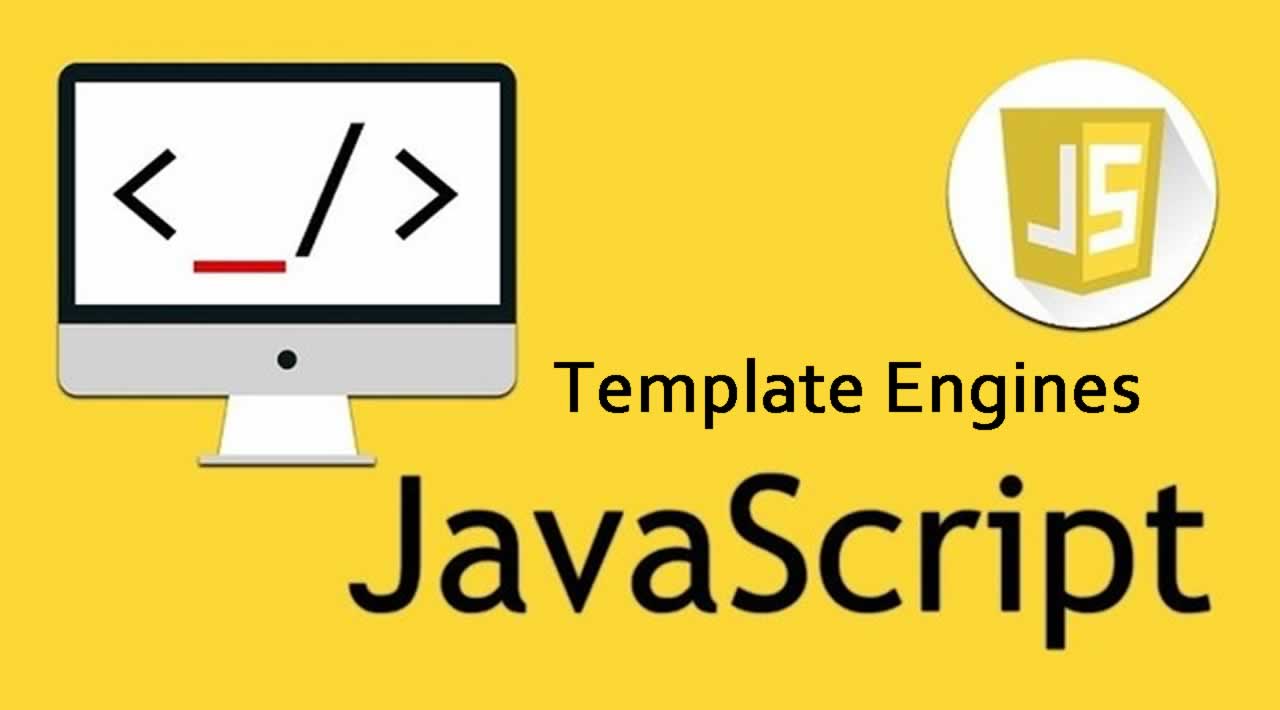Top Templating Engines for JavaScript 2020 - You need to know this !
Plugins have expanded beyond the comprehension of an average developer, and we also saw – highly anticipated – the release of ECMAScript 6; the new JavaScript standard. Frankly, ES6 was already on the way, all that needed to be done is for it to be finalized. Make sure to check out the full spec if you haven’t done so already. ECMAScript 6 improvements include better syntax for classes, along with new methods for strings and Arrays, Promises, Maps and Sets.
We keep seeing huge growth with Node.js. Frameworks such as Meteor.js, Angular.js and React.js have also made their way into the global JavaScript ecosphere. Needless to say that these have been some truly revolutionary additions to an already established system of development.
A templating engine is basically a way for developers to interpole strings effectively. If you are a heavy front-end JavaScript developer, using a templating engine will save you countless hours of unnecessary work. And because of the vast array of templating engines available today, it can be tough to make the right choice at the right time. That said, we will take a look at the most popular and dubbed best (by the community) templating engines for JavaScript today.
You may also like: Top 8 Trends and Tools Front-End JavaScript for 2020.
1. jQuery Templating
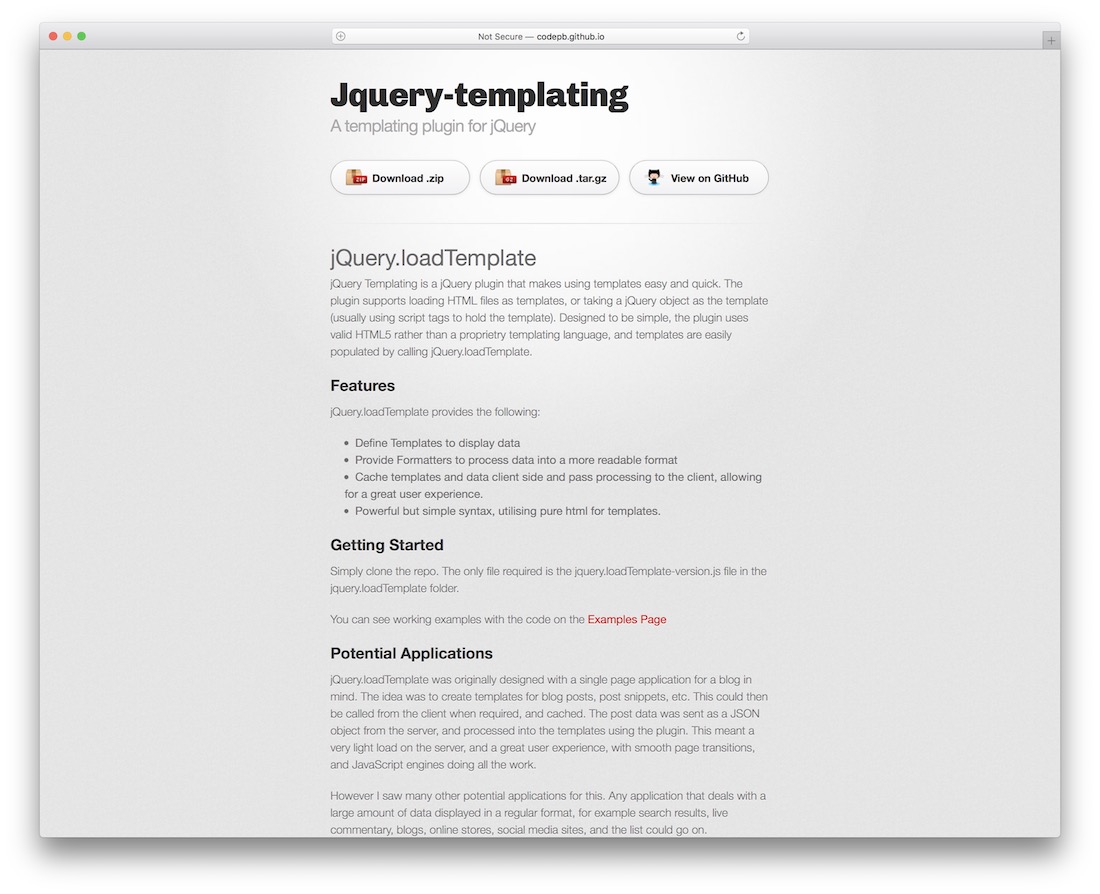
jQuery Templating provides all the necessary you are looking in a templating engine for JavaScript. It is a tool that you will find no trouble using. Not only that, it is fast, uses valid HTML5 and utilizes only pure HTML for templates. On the other hand, you can also pick up a jQuery object as the template. You can quickly populate the templates by simply calling jQuery.loadTemplate. jQuery Templating also ensures a clean final product, meaning, the data will be flowing smoothly. Head over to the official website of jQuery Templating, learn how it works and how to apply it and make a difference.
2. Template7

Template7 is the first ever mobile-first templating engine for JavaScript which is build on Handlebars. It is easy and convenient for developers to use this templating system when it comes to building mobile apps and websites. Two core characteristics that put Template7 right on top are lightweight structure and exceptional speed – the two works hand in hand anyway. If you are somewhat new to the whole templating engines for JavaScript idea, Template7 includes full installation process. In addition to that, it also covers loads of different examples for your benefit. Work with templating engines like a pro from the get-go.
3. Mustache

Mustache is one of the most widely known templating systems that works for a number of programming languages, including JavaScript, Node.js, PHP, and many others. Because Mustache is a logic-less templating engine, it can be literally used for any kind of development work. It works by expanding tags in a template using values provided in a hash or object. The name logic-less comes from the fact that Mustache works purely by using tags. All values are set and executed according to tags, so you end up saving yourself hours of “nasty” development work. Take a strategic shortcut if you will.
4. Handlebars
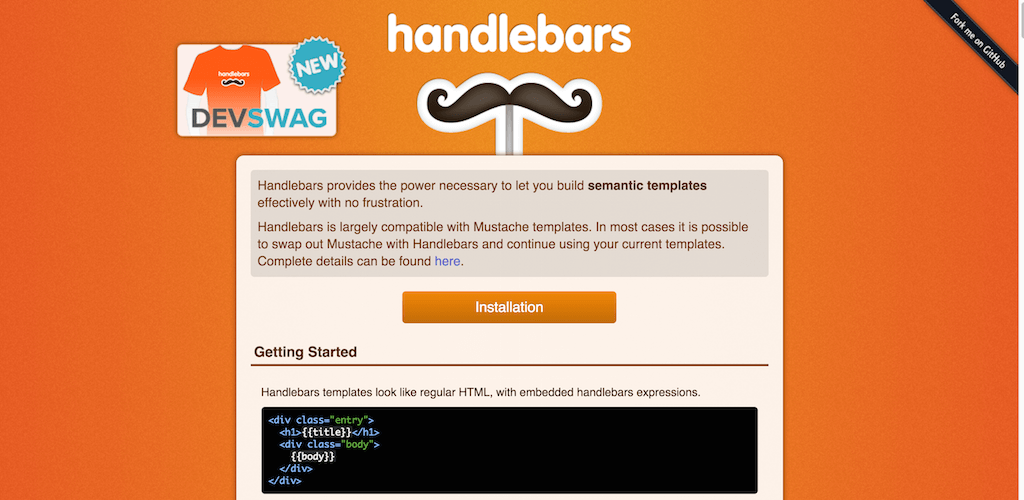
Handlebars is a close successor to Mustache with the ability to swap out tags where necessary. The only difference is that Handlebars is more focused on helping developers to create semantic templates, without having to involve all the confusion and time consumption. You can easily try out Handlebars yourself (there’s also an option to try Mustache on the same page) and see for yourself whether this is the type of templating engine you’re looking for. Last but not least, Handlebars was set up to work flawlessly in any ECMAScript 3 environment. In other words, Handlebars works with Node.js, Chrome, Firefox, Safari and others.
5. doT
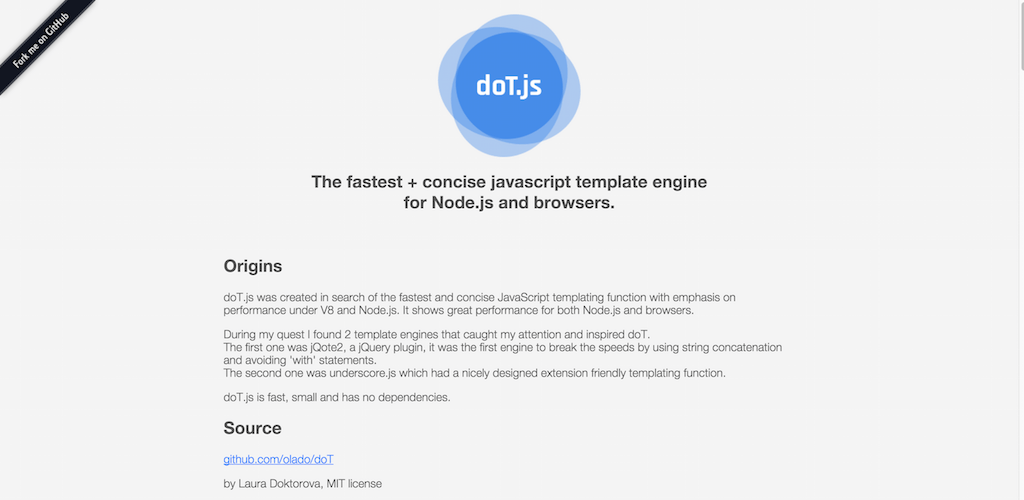
doT.js is small, efficient, fast and lightweight templating engine that supports itself (no dependencies), and works great with Node.js and native browser integration. With full compatibility with Node.js and browsers, you know the performance will be outstanding. Super fast, encoding, whitespace control, compile-time evaluation and custom delimiters are just some of the features of doT.js. For your information, doT.js got inspiration from jQote2 and underscore.js plugins. It is very user-friendly, perfect for both beginner and professional web developers. You can find different examples, installation and other instructions on GitHub for a smooth and seamless integration.
6. EJS

Nope, we are still not done with presenting you fantastic and most popular JavaScript template engines. The next on our list is going to be Embedded JavaScript Templates (EJS). A lightweight solution towards creating HTML markup with simple JavaScript code. Worry not about organizing your stuff in the right manner; it is just straight JavaScript all the way. Fast code execution and ease of debugging make this the perfect templating engine for those who want to do HTML work with their favorite language, presumably JavaScript. When it comes to execution, you can expect it to be impressively fast when working with EJS. Get your hands on Embedded JavaScript Templates and start strong.
7. Nunjucks

Nunjucks is a rich and powerful templating language for JavaScript made by Mozilla which we all know by their work on Firefox. In short, Nunjucks is rich and convenient, very comfortable to use for newbies and experts alike. Due to its light structure, you know already that the execution of Nunjucks will be fast and flawless. The tool is also flexible and extendable with custom filters and extensions which you can introduce at free will. You can employ Nunjucks in node or any other modern and well-liked browser. There are many different examples on the Nunjucks page for you to get the gist of it.
8. Underscore
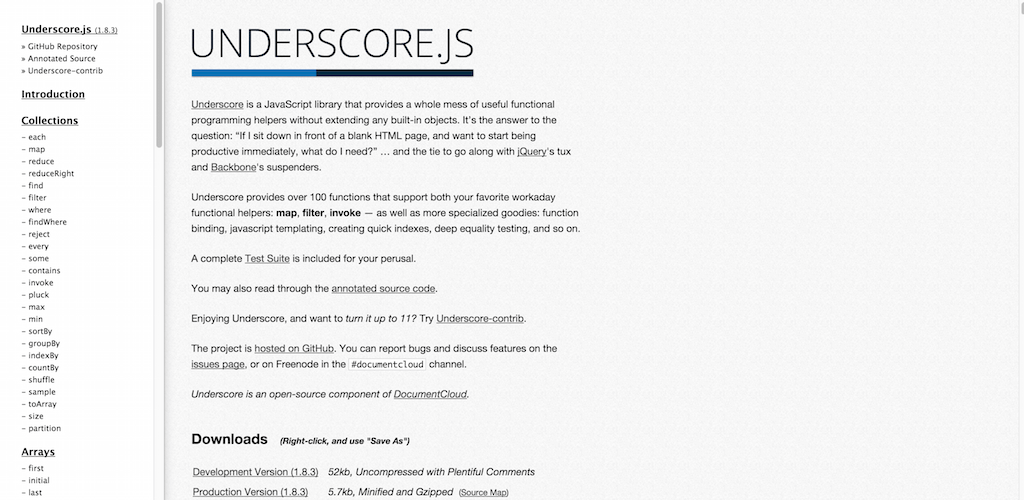
Underscore, another highly reputable templating engine, is an external JavaScript library that enables developers to take advantage of functional helpers that keep the code base intact. Solves the problem of having to open your code editor and not knowing where to start. Providing over one hundred functions that support your favorite workaday functional helpers, like map, filter and invoke. Not to mention, Underscore is also compatible with other more specialized goodies. Speaking of which, those are function binding, javascript templating, creating quick indexes and deep equality testing, to name a few. Go through the full introduction of Underscore first and make moves second.
9. Pug

When people say Python is like writing in English, they underestimate the magnitude of that statement when it comes to Pug syntax programming. The Pug template engine (for Node.js) is literally enabling developers to write code that looks like paragraphs straight out of a book. Not only does this improve the overall code productivity, but it can also help to streamline the work on a project that consists of multiple team members. By the way, with the superb Pug, you can also go after crafting WordPress theme but you do need to use a plugin that goes by the name Wordless. How cool does that sound?
10. Marko

Marko is a simple to use and highly practical templating engine for JavaScript. Whoever is familiar with HTML, CSS and, of course, JavaScript, he or she will have a breeze using the power of Marko. The tool is also very fast and convenient, perfect for transforming basic and simple HTML into something advanced. Bear in mind, Marko handles some of the top websites out there, meaning, it will handle yours with ease, too. For your information, Marko also fully supports Atom editor, Autocomplete, Hyperclick and Pretty printing. The latter helps keep the code clean and tidy. Last but clearly not least, Marko has no problem powering animations of up to 60FPS.
11. Jade Language
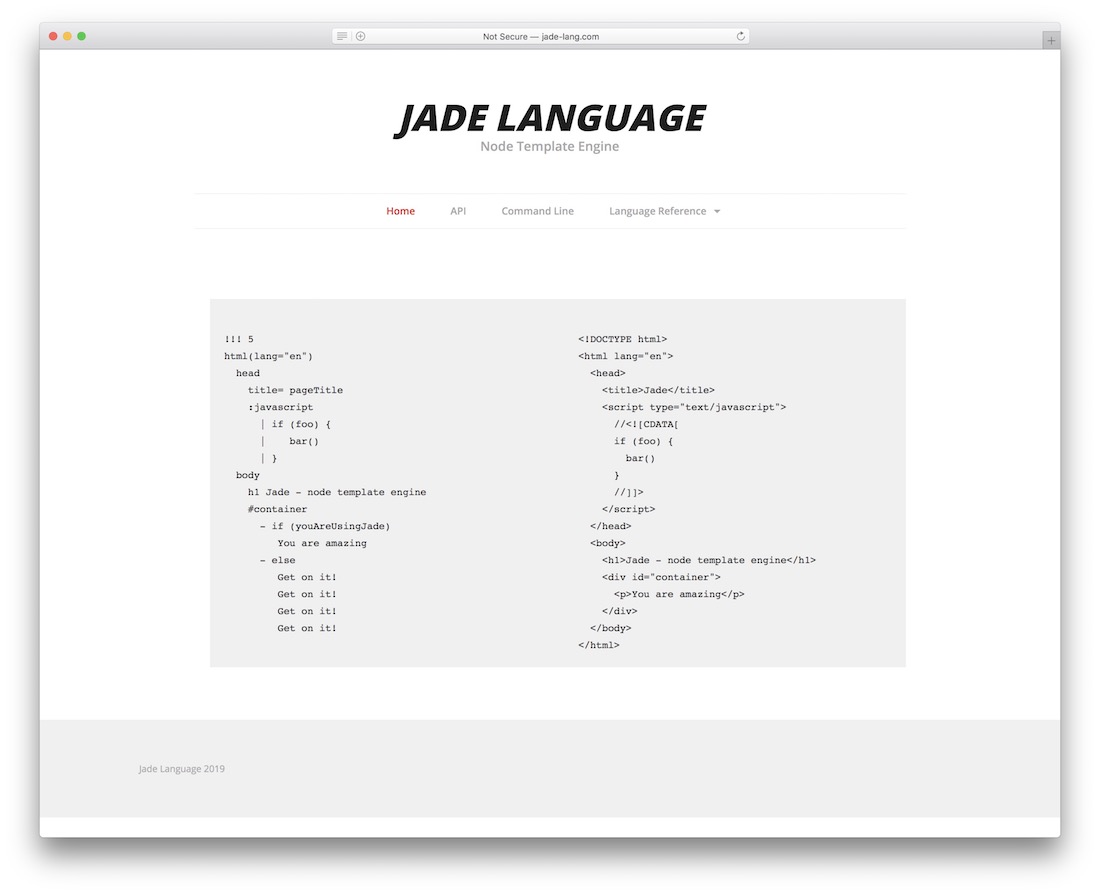
Jade Language is a slightly different templating engine for JavaScript compared to all the rest you find on this list. However, it still does the trick; in fact, it is efficient and handy, allowing you to complete the full code creation in it. You might find Jade Language somewhat distinct to use but you will surely get used to it sooner rather than later. Obviously, prior knowledge is necessary to successfully create a project with Jade Language and play around with the various features and functions it supports. Moreover, Jade Language also makes it easy to write inline JavaScript code in your template, and there are three types of codes.
12. JsRender

If you are on the hunt for the best and most straightforward templating engines for JavaScript, you sure did come to the right place. Here we have an extensive collection of tools that will do you and your project well. Another fantastic alternative is JsRender. With the tool, you can do all sorts of different things and it also allows you to render templates on a server or directly in the browsers. All that JsRender does, it does with power, sufficiency and intuitively. The performance is also outstandingly fast for your convenience. JsRender as well allows you to use with or without jQuery.
13. Squirrelly

Skip scouring the web for the best and most perfect templating engine for JavaScript. If you came thus far, you already know you have all the necessary and then some to create powerful, fast and light templates. And Squirrelly is another dope example that our hand-picked collection of tools will never let you down. All the templates that you will write with Squirrelly will be lightning fast and top-notch in performance. Also, Squirrelly does not limit you only to HTML; in fact, it works with any language. Fun fact: Squirrelly is also super small, at only approximately 2.5 KB. Other features include no white-space sensitivity, filters and partials support, custom tags compatibility and custom tags – delimeters.
14. ECT
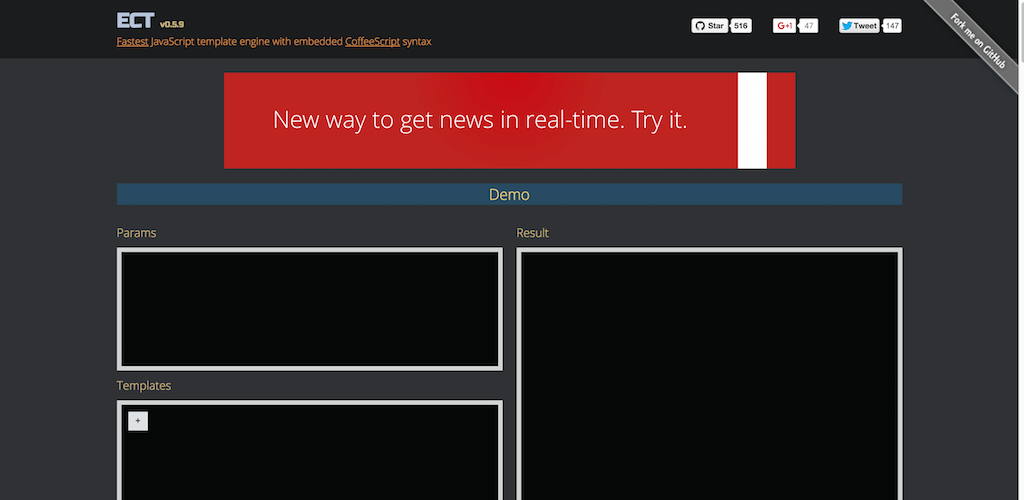
CoffeeScript is a language transpiler for JavaScript. Template engines like ECT make it very easy for CoffeeScript developers to have their own little templating engine syntax. With outstanding performance and features like caching, auto-reloading, and integrated Node.js support — ECT stands out with speed, efficiency and reliability. It works out of the box with frameworks like Express, Require and PhoneGap. On the ECT website, you can also find different usage methods with examples so you never find yourself lost. Like that would not already be enough, play around with the demo and see what’s possible with ECT – in short, a lot.
Choosing the Best Templating Engine for JavaScript
When choosing the right templating engine for our projects, we should consider the type of work we need. As well as how much of the project is actually going to be template and what kind of solution would work out for you individually in both long-term and short-term
Which templating engines for JavaScript do you prefer and why you are choosing it over others?
Advice for you: Keeping your JavaScript code clean forever and scalable.
Thank for visiting and reading this article! I’m highly appreciate your actions! Please share if you liked it!
#javascript #angular-js #node-js #reactjs #es6
